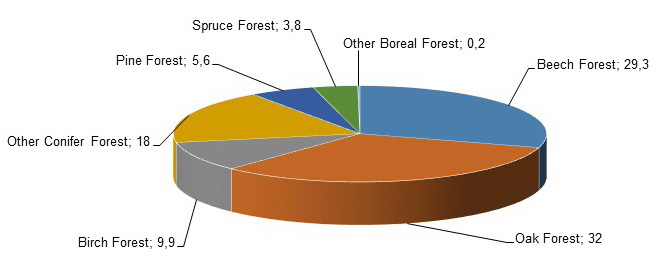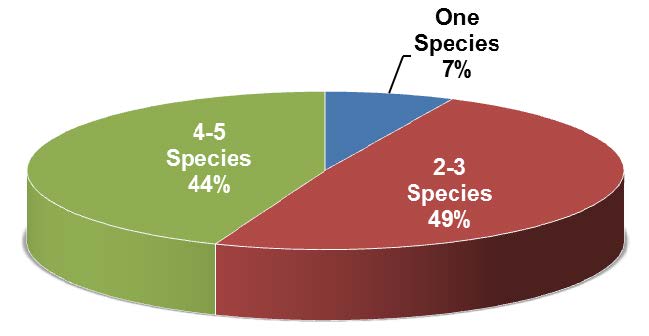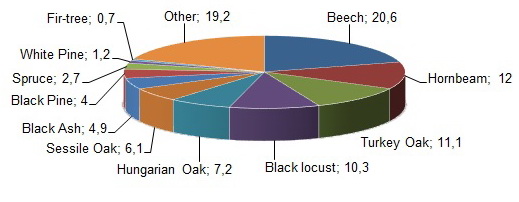Institution/Author: Environmental Protection Agency/Slaviša Popović
Of all types of vegetation, the most developed forest vegetation consists of 49 indigenous trees, 40 deciduous and 9 coniferous ones. At the beginning of the 19th century, forests covered 75-80% of Serbia, while today 30% of the territory is under forests, and 4.9% of the territory is under shrub and bush vegetation. The forest supply has the highest amount of sprout forests (64.7%), followed by compositions of high origin (27.5%) and artificially grown compositions (7.8%). The areas are covered with beech forests (29.4%), Austrian oak (15.3%) birch forests, aspen and black locust (9.9%), Sessile oak forests (7.7%), Hungarian oak forests (7.1%) pine forests (5.6%), European hornbeam forests (5.3%), spruce forests (3.8%). In the autochthonous forest genetic resources, endemic and relic taxa – Balkan pine (Pinus peuce), Bosnian pine (Pinus heldreichii), Serbian spruce (Picea omorika), European yew (Taxus baccata), Balkan maple (Acer heldreichii), etc. are the most valuable.
Forest species: The analysis shows percentage of presence of different species, according to the number of trunks. According to the National Inventory of Forests in the Republic of Serbia, there are 49 tree species, boreal ones being more numerous (40) than conifer species (9). The inventory conducted in 19th and 20th century reported 68 tree species. The most common species is beech tree, with 20.6% of the total number of tree trunks.
Mixed tree species: The analysis shows percentage of tree species by volume, in the inventory unit. Almost 50% are forests consisted of 2-3 tree species, there are 44% of forests with 4-5 tree species, while forests with only one tree species cover only 7% of the inventory unit. The forest eco-systems in the territory of the Republic of Serbia have a very favourable status.
Types of forests: The analysis shows the percentage of each forest type in the total surface covered by forests. According to data from the Forest Inventory and the Ministry of Agriculture – Forest Directorate, boreal forests are the most prevalent, and represents 91.27% of the overall forests. The most common are oak (32%) and beech forests (29.3%).


